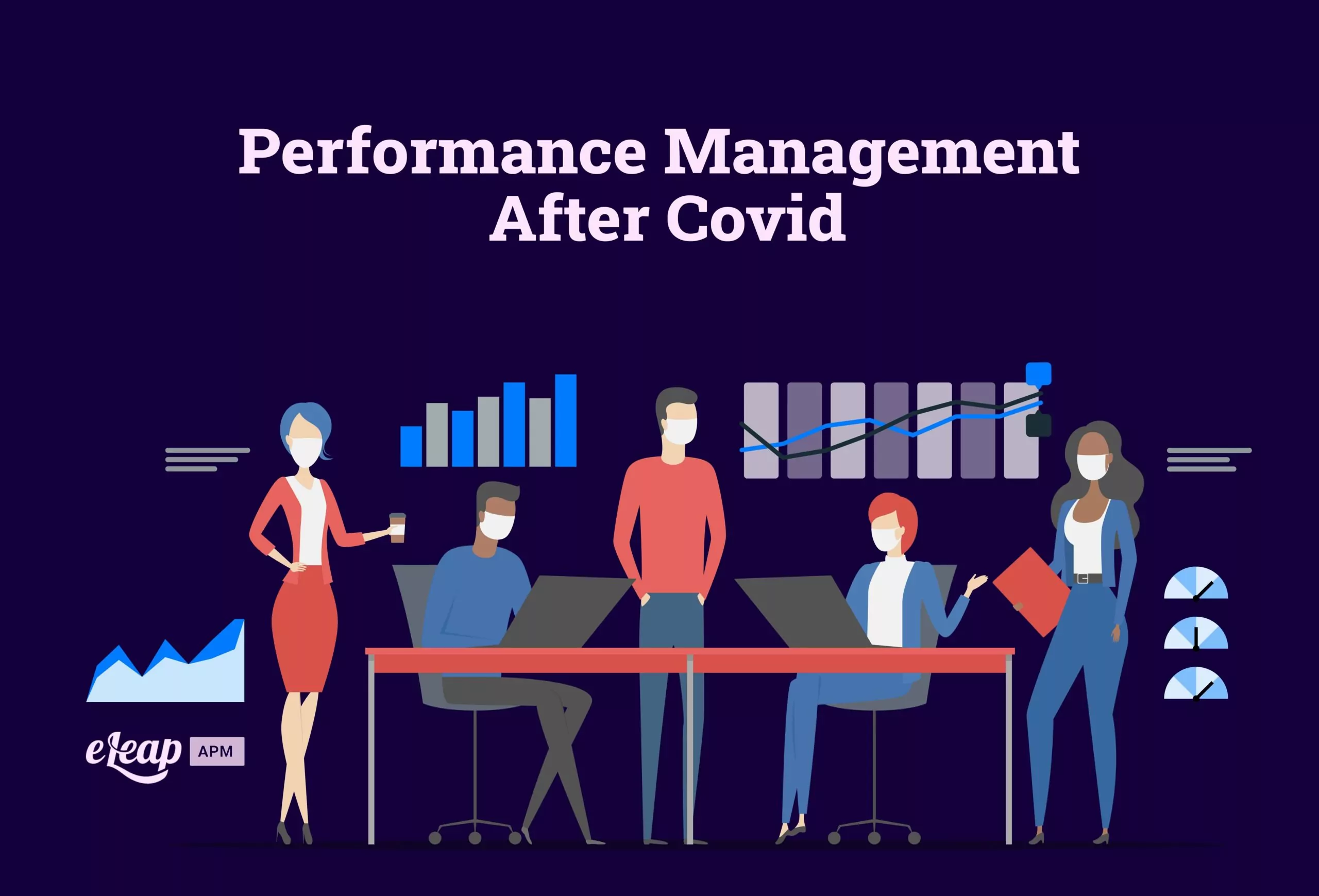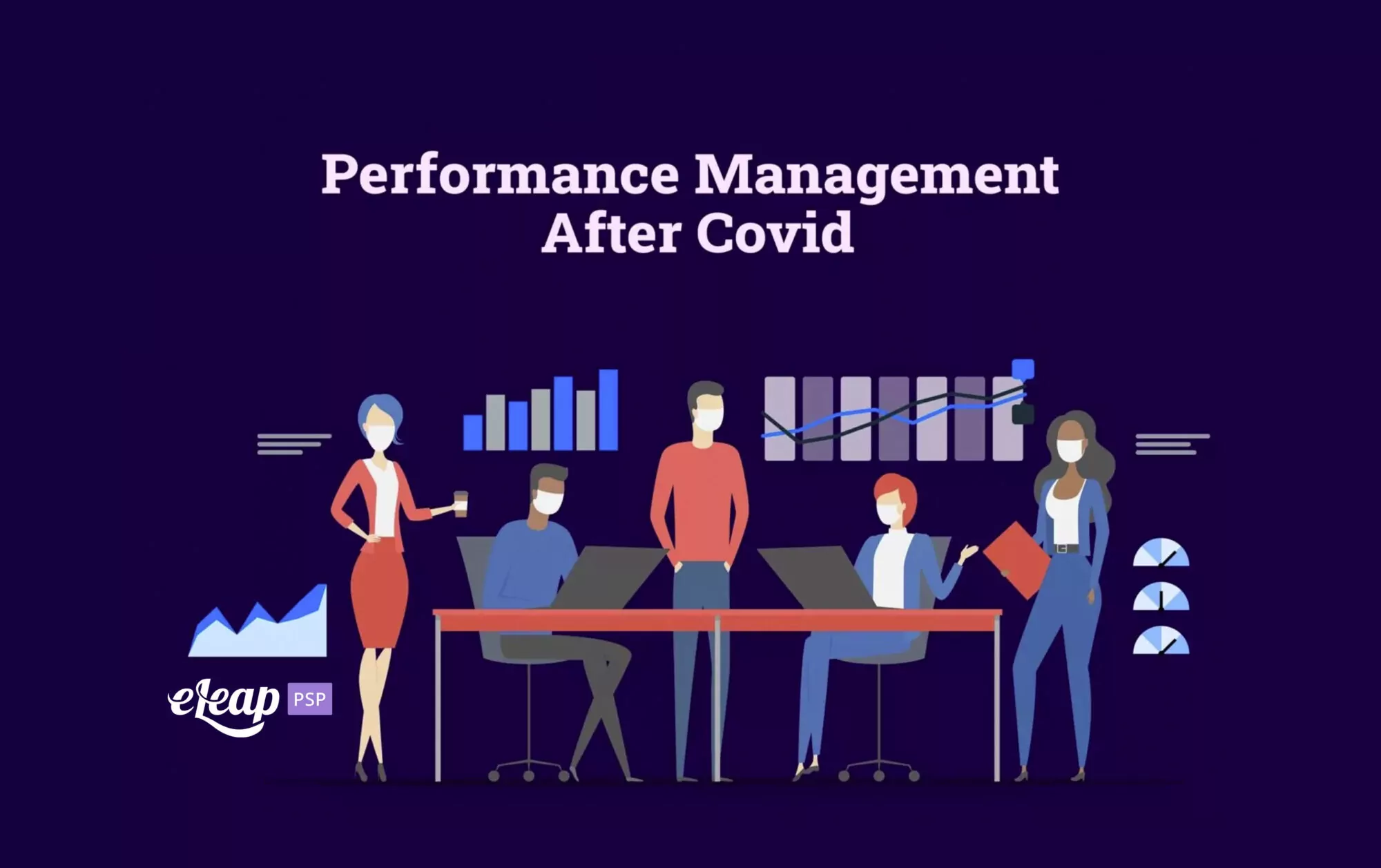Performance Management After Covid

Performance management is one of the most important processes in business. It promotes employees whose goals align with those of the organization and ensures team members remain focused on building skills and achieving personal and professional goals.
HR and performance management has undergone a shift recently and taken on the look of a business partner by creating and managing employee value and morale. This has created increased motivation without many departments and companies that have ridden the wave of change.
Any organization that focuses on employee value and ways to boost focus and engagement normally has a great PMS platform at its core. However, the PMS platform has all but eliminated the yearly and quarterly dreaded performance evaluation, instead morphing into a system of continuous feedback. The eLeaP People Success Platform, which features a continuous performance management system, provides organizations with powerful options to attract and retain high-caliber team members.

The Role of HR
HR is typically responsible for overseeing performance management and promoting quick feedback. However, this is actually a business process because it lies at the center of a company’s strategy for success. It also is considered a part of the business continuity of an organization because one of the main focuses is ensuring individual goals align with company goals.
Numerous performance management solutions have been developed and tested by organizations around the globe. Different models have helped different organizations achieve success, and what works for one company may not work for another.
However, truly successful performance management is made up of the following characteristics:
- It should create a clear vision with details of the goals that should be achieved by individuals AND teams within a certain timeframe.
- It should also send the message that achieving these goals is crucial to long-term success as a company.
- It’s a never-ending process of dialogue between management and the workforce.
- It consists of evaluating and sending feedback with the goal of measuring employee achievements and performance gaps.
- It highlights performance standards across different roles, departments, and levels.
- It should motivate underperforming employees by highlighting high-performing individuals and the associated perks.
The devastating results of Covid-19 on our economy, business continuity, and talent prospects have made your PMS platform a key player in the corporate resurgence and the restructuring of a company.
HR leaders have been given tasks that are relevant to the pandemic and the demands of “the new normal.” PMS platforms will be keys to reorganizing and stabilizing businesses. They will also play a huge role in recruiting and retaining new employees, cost optimization, and training and onboarding.
Performance Management and the New Normal
Covid has been a game-changer across many industries worldwide. Many long-standing business models have been totally overhauled after being in shambles for over a year. HR must ensure viability and longevity by installing an appropriate PMS platform, even while struggling to climb out of the corporate pit after a beat down from elements of the pandemic.
One of the biggest changes is the global shift towards remote work. A safe approach was required to keep many businesses open at all after lockdowns were imposed.
The following section highlights six elements of a modern performance management system that is designed to guarantee productivity in the remote workplace.
Productivity from your PMS After Lockdowns
Use the following list to develop a solid strategy for your PMS platform after the most intense battle with Covid.
1. Reevaluate Goals for the New Normal
Because of these unprecedented events and situations, we are encountering, workloads have changed significantly. Therefore, realignment is necessary while lending support to cross-functional tasks. Responsibilities can’t solely be used to evaluate performance anymore.
2. Follow OKR
Use the “objectives and key results” method to set and track your organization’s goals. This is an overall approach toward goals and performance at different levels, and it can promote accountability and measure how close or far goals are from being achieved.
3. Set Smart Goals
Goal-setting is even more important because of the delicate economic climate, and redefining your goals is mandatory because of the shift to remote work. Unclear goals can cause underperformance and additional worries in an atmosphere that’s already been hammered by disruption after disruption.
It’s critical that goals set by your company are specific, measurable, relevant, and time-critical. This creates more clarity, and commitment, and promotes a sense of ownership and accountability.
4. Communicate with Employees
Situations like this create fear within team members when it comes to their performance. Management must understand the need for continuous contact with employees and ensure they remain updated on relevant topics. You should also give them opportunities to discuss their lives, goals, and different elements of work.
5. Keep Feedback Continuous
Remember when we mentioned continuous feedback and your PMS platform? This provides more insight into remote workers’ performance and strategies. It will also allow you to reevaluate and establish how realistic goals are. This will also keep all team members on the same page.
When you have a determined and precise goal strategy with constant feedback, this drastically improves employee productivity and their attention toward goal-setting.
6. Believe In Your Employees
This is a critical success factor at every level. The remote worker scenario is prevalent and continues to grow, and there might be certain employees who can’t keep up with the demand for meeting deadlines. It’s incorrect to assume these employees are inefficient and have serious errors in judgment.
When you believe in and encourage your employees, it does incredible things for their morale and attention toward goals and development. Sometimes when a certain team member is underperforming, the driving factor is a challenge regarding confidence in their work.
In many cases, all it takes is one person to voice their belief in that individual, and things can do a complete 180. When you utilize the power of positive thinking, it can do some amazing things for your employees and the organization as a whole.
Things may be different after dealing with the challenges associated with the pandemic, but this doesn’t mean these challenges can’t be overcome. The companies that end up persevering and making the necessary adjustments to remain competitive and relevant will be the last ones standing. Depending on how you look at it, some of these adjustments provided benefits that may not have been available if you didn’t have to deal with adversity. Our greatest wins are sometimes birthed from our most difficult challenges, and the pandemic is a great example of this.